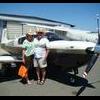-
To upgrade your membership to Supporter level (removes ads, allows posting in classifieds & more!) please click this link.
Earth,water or Trees?
-
To upgrade your membership to Supporter level (removes ads, allows posting in classifieds & more!) please click this link.
-
Members Online
- mooniac58
- GoDemonDeacons
- PT20J
- Brandt
- Rick Junkin
- MikeOH
- J3dfamily
- Christian S
- N201MKTurbo
- exM20K
- Paul Thomas
- Ragsf15e
- midlifeflyer
- Guillaume
- mluvara
- Reek778
- kortopates
- Ibra
- Marc_B
- 201er
- brentdur
- Lmiller737
- Niko182
- natdm
- Joe Linnebur
- TCC
- kaba
- TangoTango
- Will.iam
- TravelingIA98
- WheelPantsOff
- Crawfish
- Mufflerbearing
- Hank
- eman1200
- NickG
- jeremyc209
- Jim Peace
- toto
- CCAS



Recommended Posts